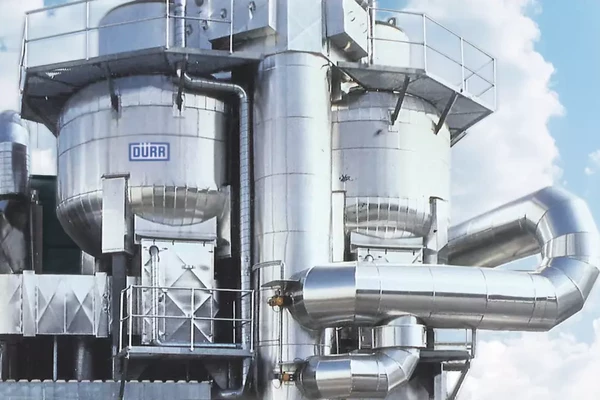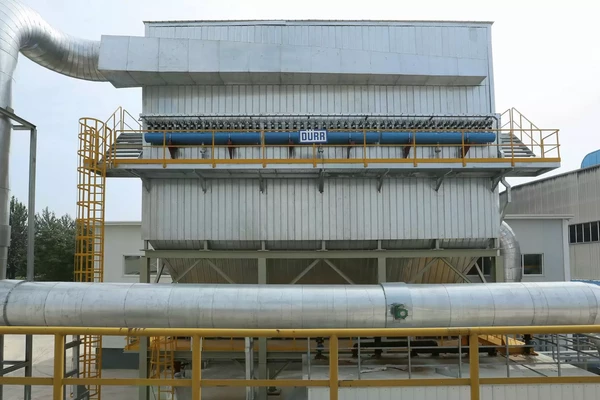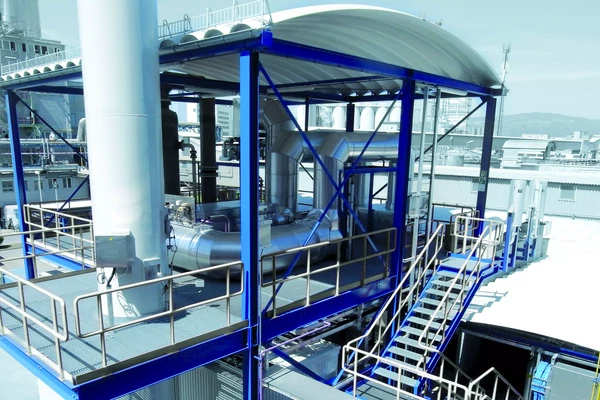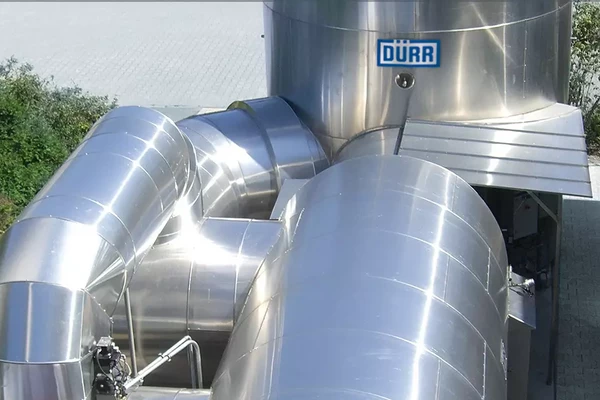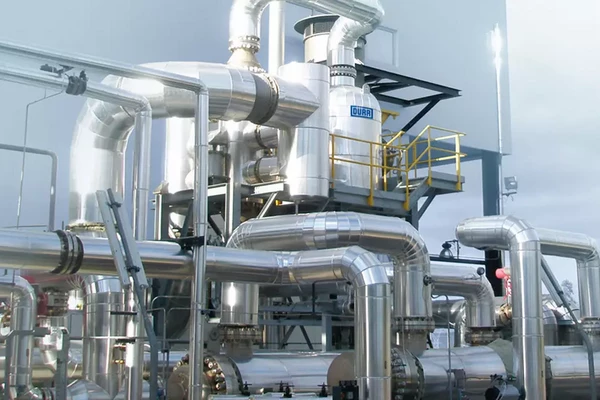Catalytic processes
Dürr offers a wide range of different catalytic air pollution control systems, which are designed to produce outstanding results with different types of pollutants and operating parameters.
In order to describe the operating principle of Dürr systems based on the catalytic process, it is important to explain what a catalytic system is. First we need to highlight the differences between catalytic based Air Pollution Control Systems and other fundamental processes for air pollution control.
Catalytic processes always involve the use of a catalyst. The task of the catalyst is to reduce the amount of activation energy needed to achieve a reaction. Dürr uses catalysts for oxidation processes and for reduction processes. Dürr offers a range of different systems perfectly satisfy customers' requirements.
What are catalytic processes based on? The pollutants in the exhaust air converted into non-hazardous substances above a certain temperature. This temperature is generally very high: between 700 and 800°C. As a large amount of energy is needed to heat the exhaust air to this temperature, a catalyst is used to reduce the reaction temperature and therefore also the energy consumption. This allows the reaction temperature lowered to between 300 and 500°C, which leads to considerable energy and cost savings.
To ensure that the pollutants can converted without problem, two factors need to taken into account. Firstly, the temperature of the exhaust gas must exceed a certain minimum level to ensure that a reaction takes place in the catalyst. A heat exchanger generally used to transfer the energy from the purified air to the exhaust air. As a result, the exhaust air can heated to the temperature necessary for a reaction in the catalyst.
Secondly, depending on its composition, the exhaust air may need preconditioning so that unwanted particles can removed. This is necessary to prevent catalyst poisoning, which deactivate the catalyst, making it unusable and unable to perform. Catalyst poisons cover the surface of the catalyst and slow down its effect or prevent it from functioning altogether. For this reason, this Air Pollution Control System of Dürr can only applied with exhaust air containing certain kinds of pollutants. If a pollutant that is a catalyst poison needs to remove from the exhaust air, a catalytic combustion system is not a suitable choice.
Dürr offers a range of different catalytic air pollution control systems, which designed to produce outstanding results with different types of pollutants and operating parameters.
The portfolio of products includes the high-pressure catalytic systems, which is the ideal solution for purifying exhaust gases produced under high pressure. By contrast, in the low-pressure catalytic systems the pollutants converted at atmospheric pressure. This system is best suited to removing Volatile Organic Compounds (VOCs) from exhaust air.
If dust, sulfur, or nitrogen oxide needs to extract from the exhaust air, thecatalytic filter element is the perfect choice. This filter system allows a range of different substances to be removed simultaneously using catalytic oxidation.
Regenerative catalytic oxidizer (RCO) combine the benefits of regenerative heat exchangers and catalytic oxidation. The RCO is used to lower pollutant levels in exhaust air volume flows with a low pollutant load and to reduce unpleasant odors.
The final system that uses the catalytic process is the Selective Catalytic Reduction (SCR). The SCR is used for nitrogen oxides (NOx) in flue gases and process exhaust gases when high Nitrogen oxide conversation rates are required.

